Tamarind paste is a key ingredient in many Asian and Indian dishes, providing a sweet and sour flavor that’s difficult to replicate. If you’re in a bind and looking for a tamarind paste substitute, there are a few handy ingredients you can use in a pinch to approximate the taste and texture of tamarind paste.
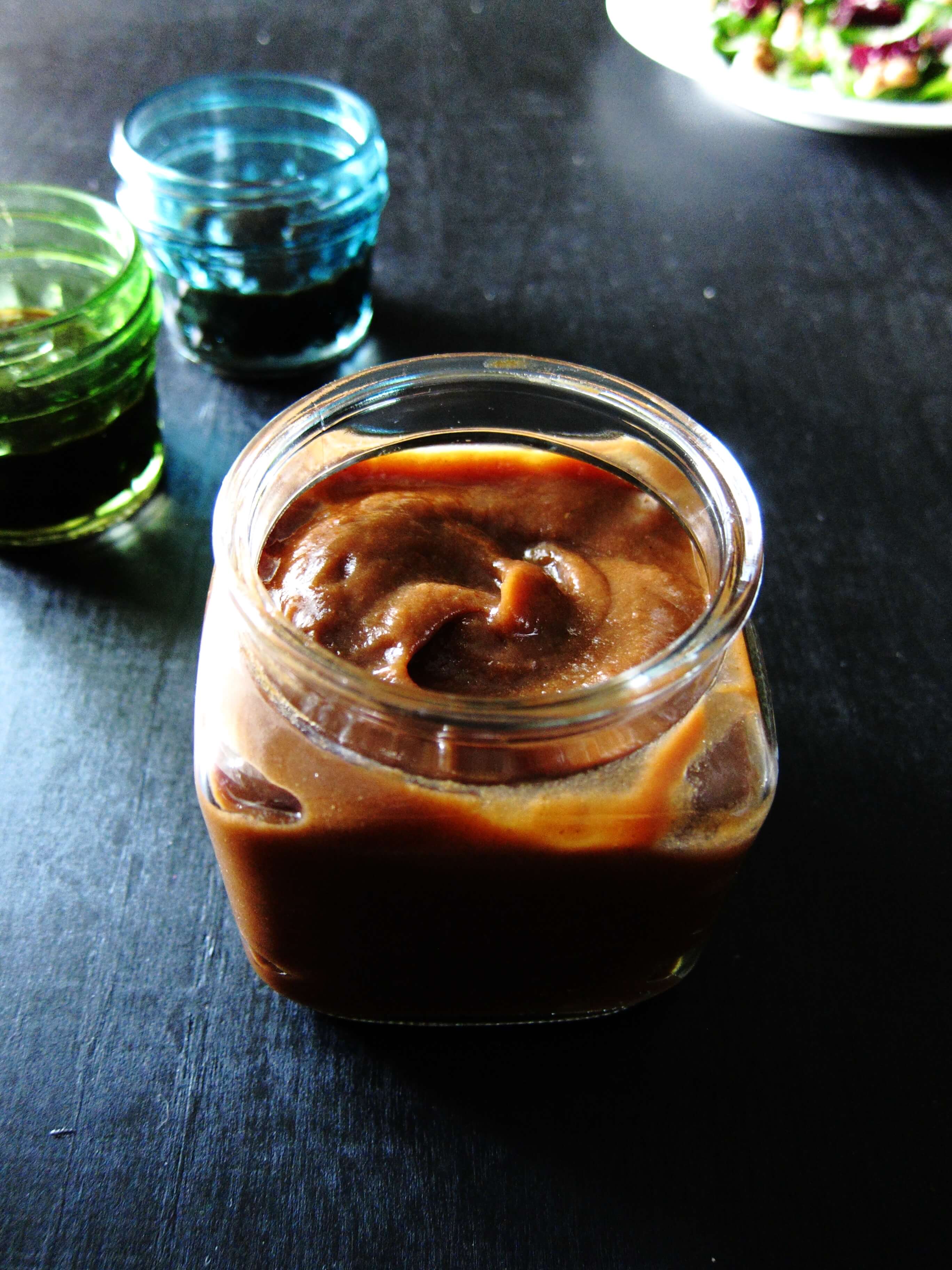
This post contains affiliate links. As an Amazon Associate, I earn from qualifying purchases. Please read the disclosure.
What is Tamarind?

The tropical tamarind tree produces long, velvety brown seed pods filled with pulp. This tamarind fruit is used to make a paste that adds a tangy, fruity flavor that enhances savory dishes.
It’s sweet, sour, spicy, and savory, and it’s a crucial ingredient in Asian cuisine, including curries, noodles, and dipping sauces like tamarind chutney or tamarind sauce.
I use tamarind paste frequently in my cooking. I use it in my beef rendang, Instant Pot massaman curry, and my Instant Pot sambar recipes.
I tried out a dozen alternatives to tamarind paste. I even got my whole family to do a few blind taste tests.
Finding an ideal alternative to the taste of tamarind is difficult because of its unique depth of flavor! Your best option is to purchase a jar of tamarind paste at an Indian store, an Asian store, or on Amazon.
But if you can’t find tamarind, I’ll show you different tamarind substitutes that provide a similar flavor profile to tamarind and will work in a pinch.
It’s much easier to substitute tamarind paste when a recipe has a small amount of tamarind paste.
These alternatives use common ingredients like tomato paste, citrus juice, vinegar, raisins, dates, and even steak sauce to try and replicate the complexity of tamarind paste.
Finally, I’ll give you my recommendations on the best tamarind substitute.
Tamarind Paste Substitutes
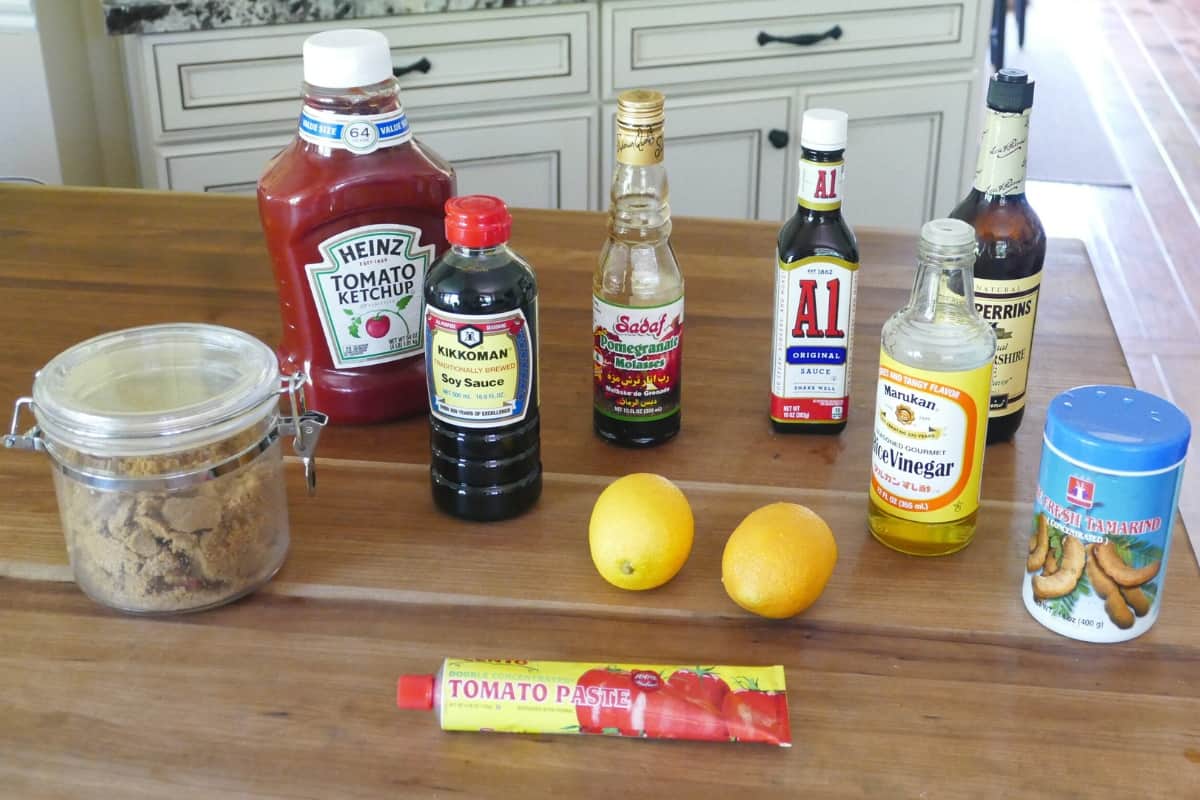
Many of the following suggested substitutes are tart and require a sweetener to be added to balance the acidity and approximate tamarind paste’s sweet-tart flavor and consistency.
I recommend brown sugar to add a hint of sweetness because it has a dark color. You can also use maple syrup, honey, or granulated sugar.
Tomato Paste and Brown Sugar
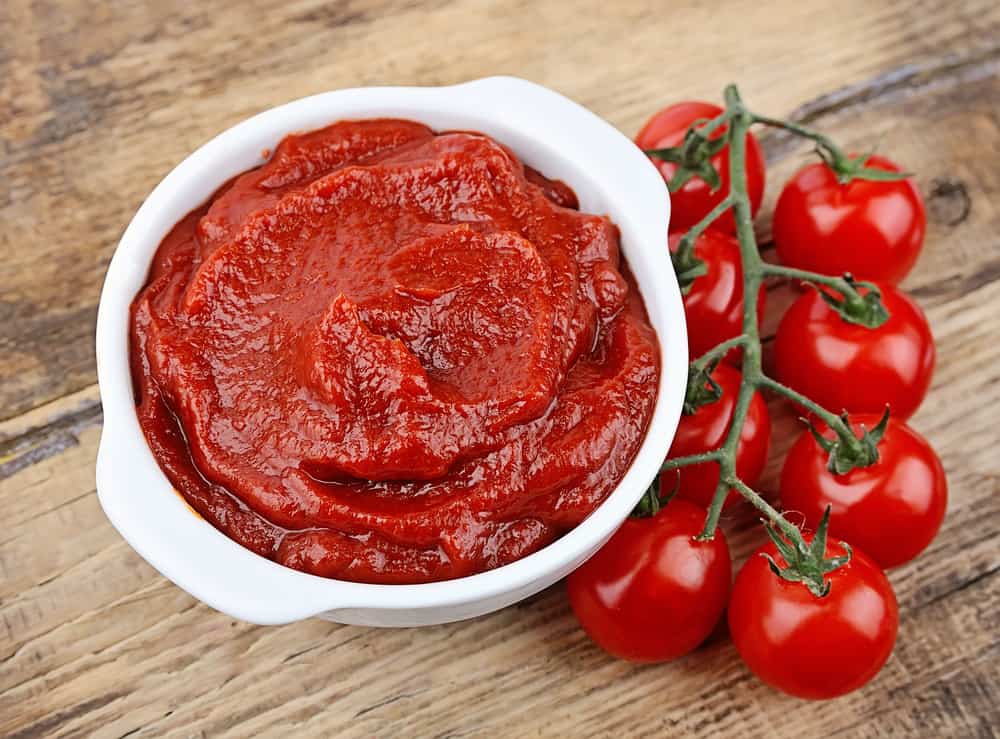
Tomato is a souring agent and can provide some of the tanginess of tamarind.
It will add a tomato flavor to your recipe that could alter the flavor profile, so it’s best for recipes that already contain tomatoes or if your recipe calls for tamarind paste in small quantities.
📍How to Use Tomato Paste as a Substitute
- Mix 1 teaspoon tomato paste, ½ teaspoon brown sugar, and 1 to 1 ½ teaspoons fresh lemon juice.
- Do a straight substitution. To replace tamarind paste, substitute the same quantity of tomato mixture.
✅ Tomato paste makes a pretty good substitute for tamarind.
Lemon Juice and Brown Sugar
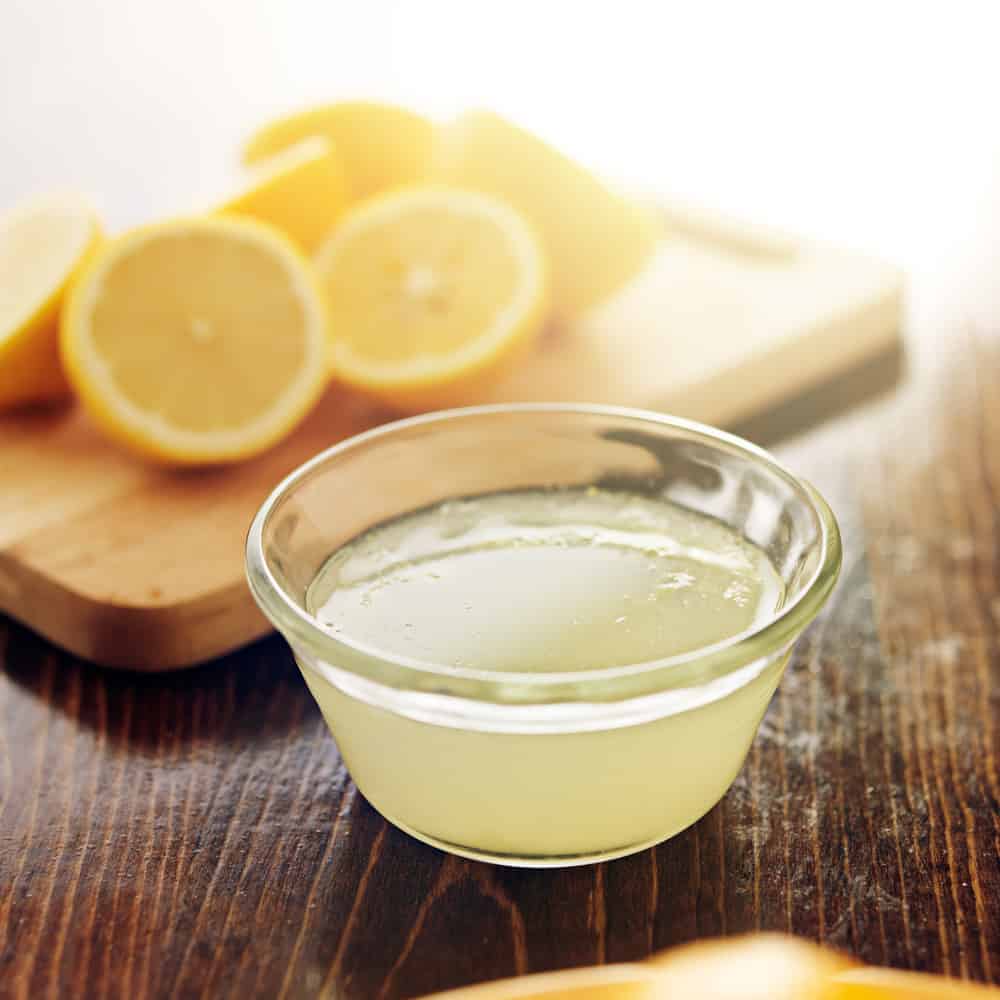
Lemon juice provides sourness, though the citrus flavor differs slightly from tamarind. Mix lemon juice or lime juice and brown sugar to balance the tartness. I think lemon juice is better than lime juice because lime juice can be slightly bitter.
📍How to Use Lemon Juice as a Substitute
- Mix 1 teaspoon fresh lemon juice and ½ teaspoon brown sugar.
- Do a straight substitution. Use the same quantity of citrus mixture in place of tamarind paste.
✅ Lemon juice works well when you don’t have tamarind.
White Vinegar and Brown Sugar
I tried white vinegar, apple cider vinegar, and rice vinegar. I found that white vinegar had the most neutral taste of the three.
📍How to Use Vinegar as a Substitute
- Mix 1 teaspoon vinegar with ½ teaspoon brown sugar.
- Substitute the same quantity of the vinegar mixture for each teaspoon of tamarind paste.
✅ Vinegar makes an excellent substitute for tamarind.
Dates, Raisins, or Prunes and Lemon Juice
This combination is a good substitute for tamarind paste because of the fruit. The dried fruit provides sweetness similar to tamarind to counter the acidity of vinegar. Soak the dried fruits in hot water for 20 minutes and blend them into a paste.
📍How to Use Dried Fruit as a Substitute
- Soak 1 tablespoon dates, raisins, and/or prunes (any combination) for 30 minutes.
- Drain the dried fruit and blend with 2 teaspoons of fresh lemon juice or vinegar.
- Use an equal quantity of dried fruit mixture instead of tamarind paste.
✅ Dried fruit paste is a good alternative to tamarind.
Worcestershire Sauce
Worcestershire sauce has a strong flavor that may taste good in some heavily spiced recipes. But if you’re looking for a more neutral flavor, this choice is not for you!
📍How to Use Worcestershire Sauce as a Substitute
- Mix 1 teaspoon worcestershire sauce with ½ teaspoon brown sugar and ¼ teaspoon lemon juice.
- Replace the same quantity of Worcestershire sauce mixture for each teaspoon of tamarind paste.
❌ Worcestershire sauce has a bold flavor and may alter the taste of your recipe.
A1 Steak Sauce, HP Sauce, or Brown Sauce
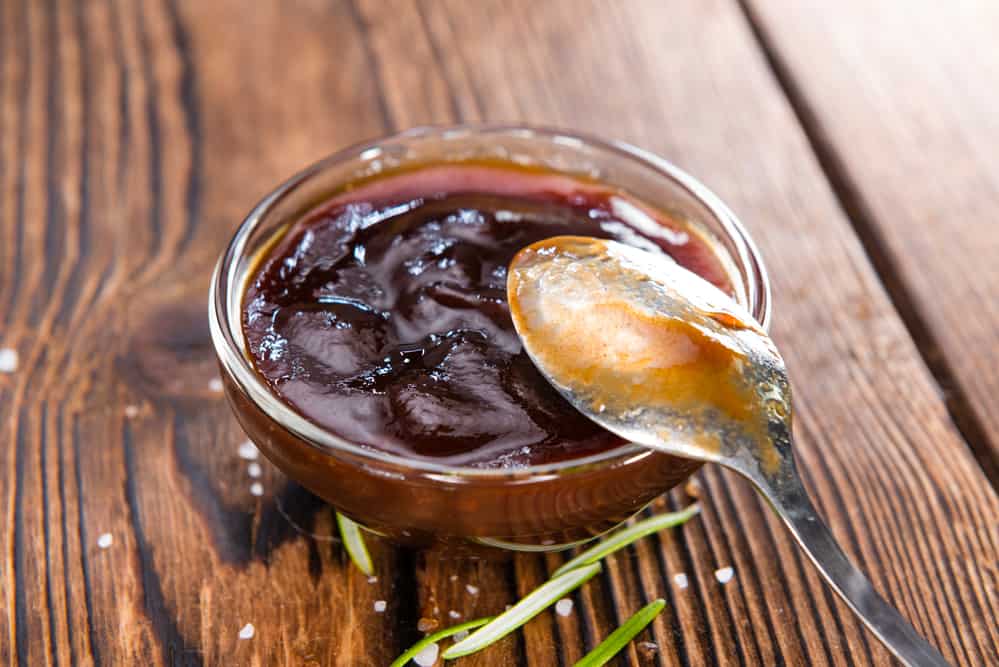
A1 steak sauce (or HP sauce in the UK) is better than Worcestershire sauce because the flavor isn’t as strong. It works well in meat curries and flavorful recipes.
📍How to Use Steak Sauce as a Substitute
- Mix 1 teaspoon steak sauce with ¼ teaspoon brown sugar and a few drops of lemon juice.
- Replace the same quantity of steak sauce mixture for each teaspoon of tamarind paste.
✅ Steak sauce works quite well, but has a more complex flavor profile.
Ketchup
Ketchup is often seen as an ingredient in Western recipes for pad Thai. This is because it’s easily found in most kitchens, making it convenient.
It can be used as a substitute for tamarind concentrate, but the flavor profile differs significantly.
Pomegranate Molasses
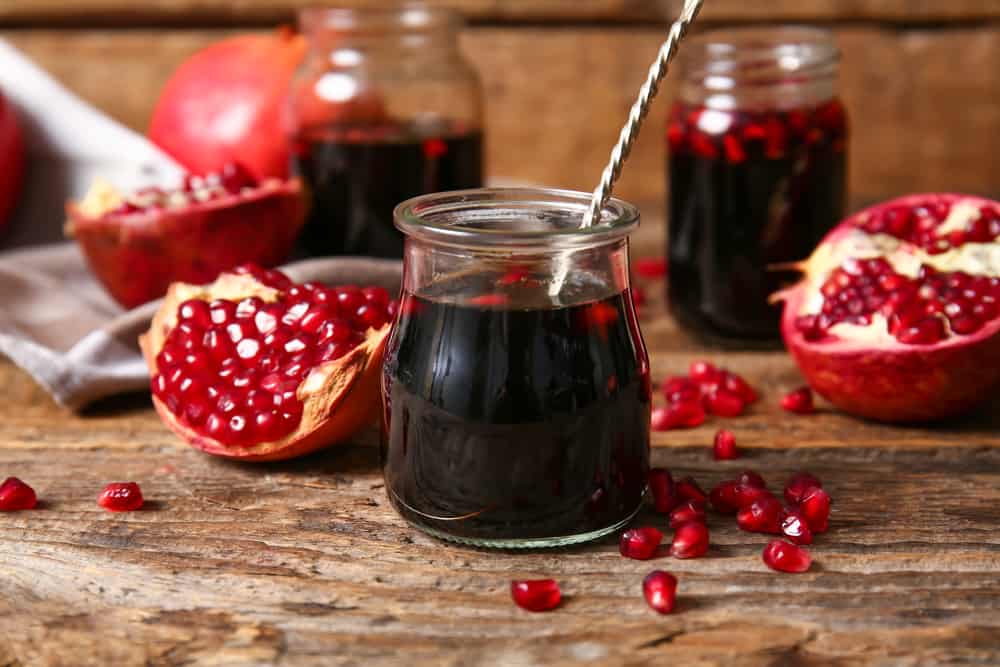
Pomegranate molasses is a thick syrup made by reducing pomegranate juice. It has a rich, intensely tart, and slightly sweet flavor that makes it a popular ingredient in Middle Eastern cuisines.
You can find it at Middle Eastern grocers, specialty food stores, or some supermarkets’ international aisles.
📍How to Use Pomegranate Molasses as a Substitute
- Use ¾ teaspoon of pomegranate molasses for each teaspoon of tamarind paste.
✅ Pomegranate molasses is more tart and sweeter than tamarind, so use it sparingly. It is the perfect tamarind substitute for pad thai.
Amchur or Mango Powder
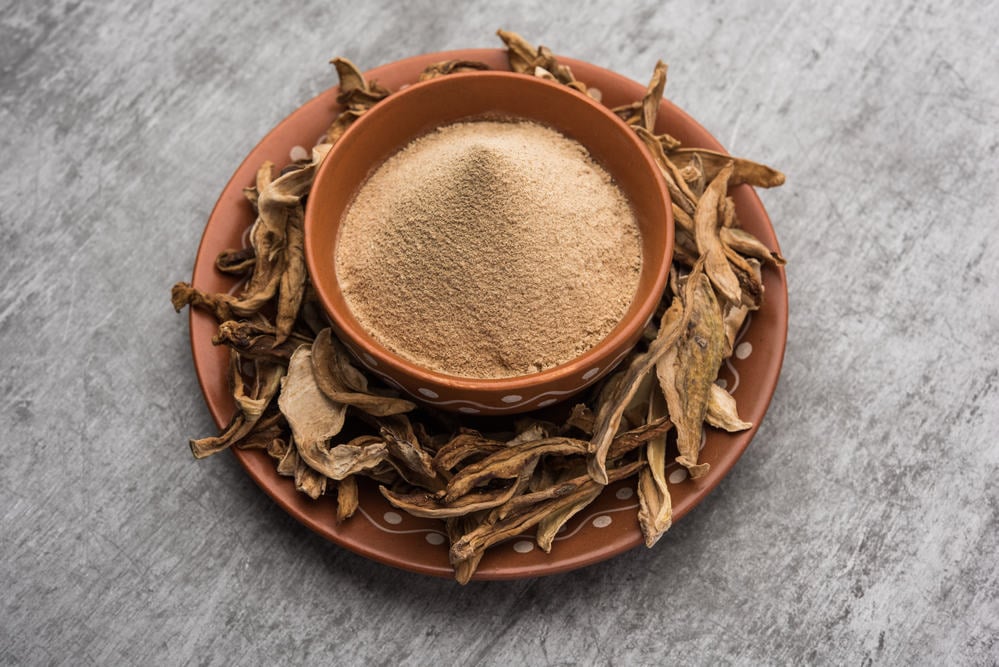
Amchur powder has a gritty texture, and it’s intensely tart, with a mango flavor. Just a sprinkle of amchur powder is needed to provide a fruity sour note. It works as a substitute in Indian cooking but may not be suitable for other cuisines.
📍How to Use Amchur Powder as a Substitute
- Mix 1 teaspoon amchur powder with enough water to make a paste.
- Substitute amchur for tamarind in the same proportions.
❌ Amchur has the right amount of tartness but has a grainy texture and different flavor. It will work for some Indian recipes.
Anardana powder or Pomegranate Powder
Anardana powder is made from pomegranate seeds that are dried and ground into a coarse, reddish-brown powder.
The flavor is sweet and tangy – like a concentrated pomegranate juice.
📍How to Use Pomegranate Powder as a Substitute
- Mix one teaspoon of anardana powder with enough water to make a paste.
- Substitute anardana for tamarind in the same proportions.
❌ Pomegranate powder is more sweet and less tart than tamarind paste.
Tamarind concentrate
Tamarind concentrate is made by extracting the juice from tamarind pulp and then boiling it to achieve a concentrated form. The resulting liquid is strained to remove any remaining solids.
Tamarind concentrate is a thick, syrupy liquid that is more concentrated in flavor than the paste, so you need to use less.
📍How to Use Tamarind Concentrate as a Substitute
- Use one-third the quantity of tamarind concentrate when replacing tamarind paste in a recipe.
✅ Tamarind concentrate is a great substitute for tamarind paste.
Tamarind pulp
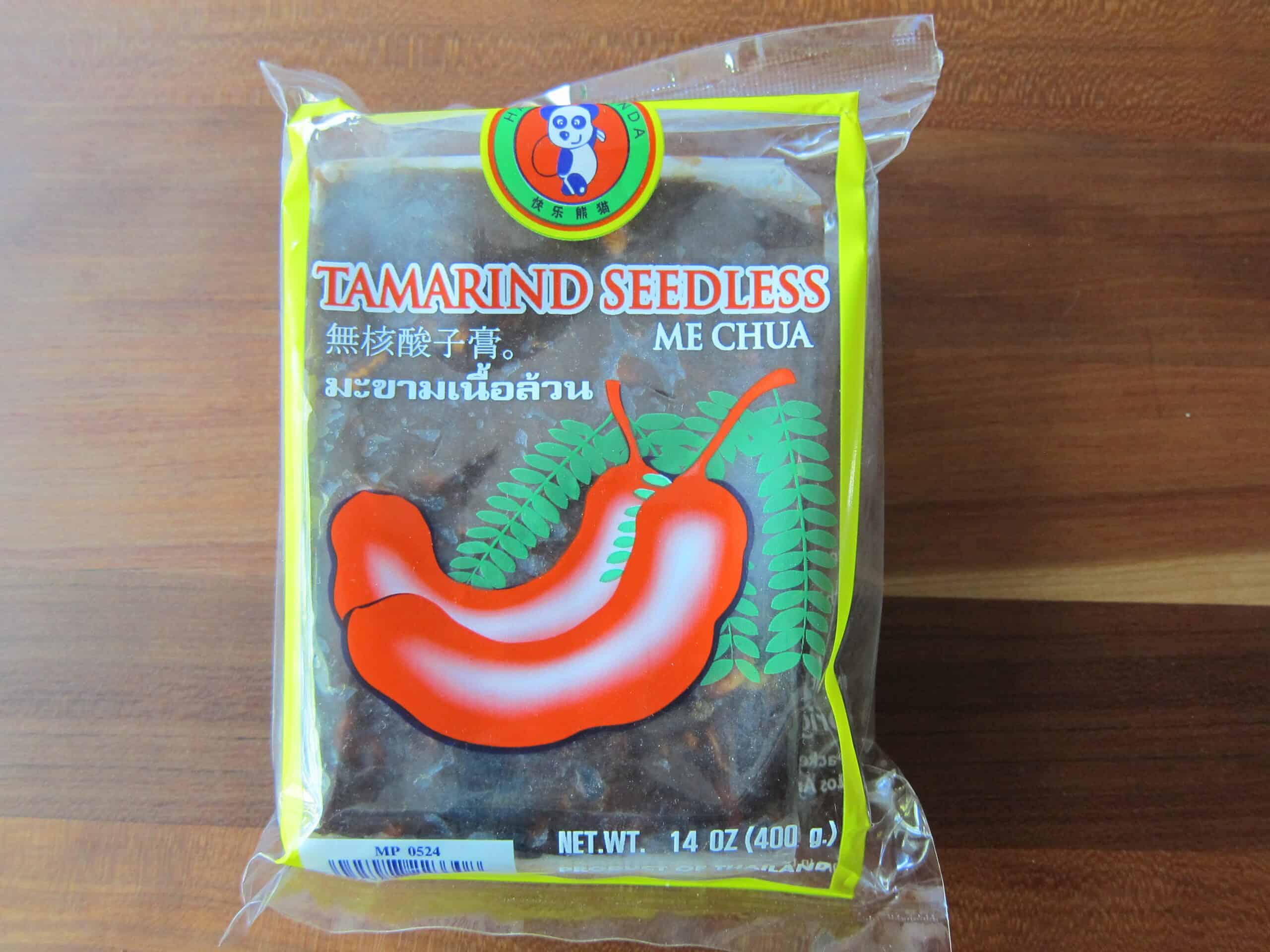
The best substitute for tamarind paste is making your own from a block of tamarind that can be purchased at an Indian or Asian store. Soak it in hot water to soften it, then mash and strain it.
📍How to Make Tamarind Paste at Home
- Tamarind paste can be easily made at home if you can find dry tamarind at a local Indian grocery store or Asian store.
- Soak the dry tamarind in boiling water and strain.
- See full details in the recipe card below.
✅ This homemade tamarind paste is the perfect substitute.
❓ FAQs
It has a layered sour and sweet taste that adds fruity depth and acidity but usually isn’t too sour. The popular noodle dish pad thai gets its distinct taste from tamarind.
Tamarind paste is a thick, sticky paste made by boiling tamarind pulp with water and straining off the seeds and fibers. It has a concentrated, sour tamarind flavor and a slightly chunky texture.
Tamarind concentrate is made by evaporating water from tamarind pulp to make a thick, syrupy liquid. It is even more concentrated and sour than the paste. It has a smooth, syrupy consistency.
WHICH TAMARIND PASTE SUBSTITUTE IS BEST?
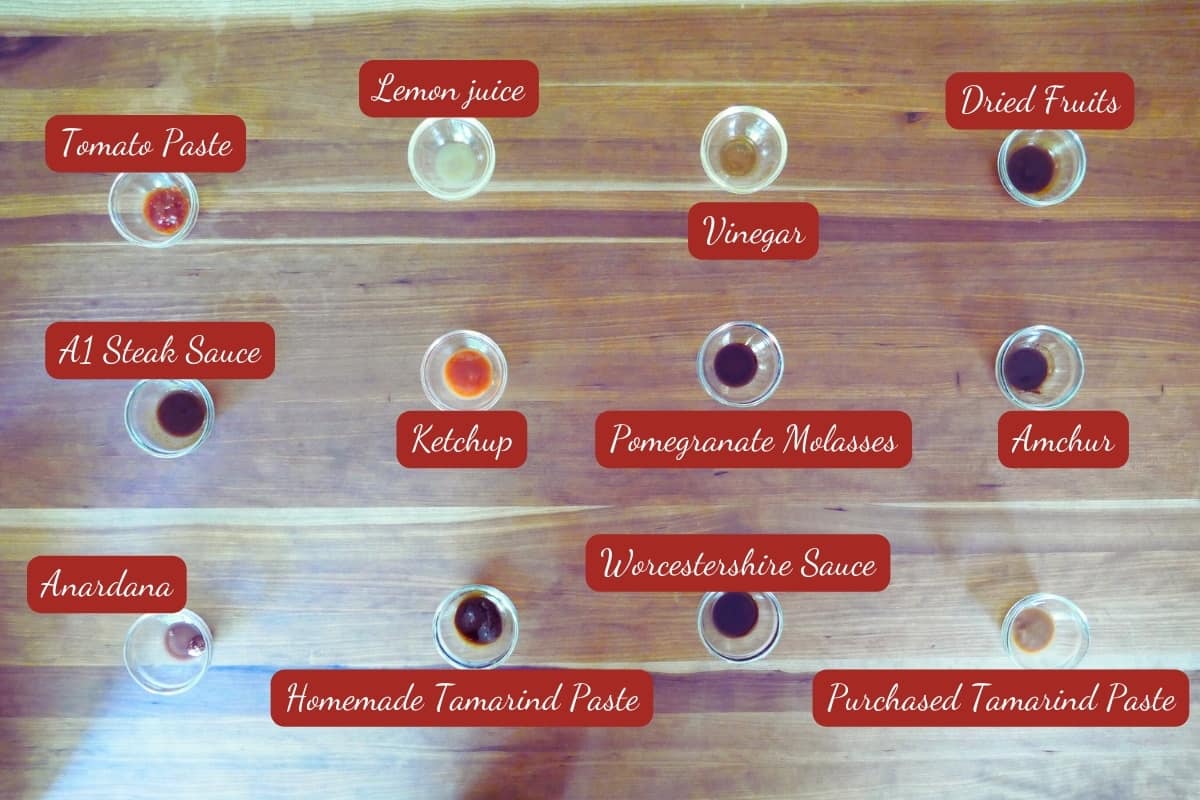
I decided to try out all the above alternatives for tamarind paste. I even did blind taste tests with my whole family! Below is my ranking in order of preference.
✏️ THE SUBSTITUTES FOR TAMARIND
- Vinegar + brown sugar
- Lemon juice + brown sugar
- A1 steak sauce + brown sugar + lemon juice
- Tomato paste + brown sugar + lemon juice
- Dried fruit + lemon juice
- Pomegranate molasses
- The tamarind alternatives may alter the taste of your recipe. Taste and adjust the ingredients as necessary to compensate.
- If you make more recipes that have tamarind, I suggest keeping a small jar of tamarind paste on hand for authentic flavor. Check out the recipe below.
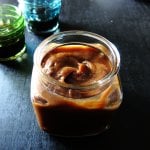
Tamarind Paste Recipe
Ingredients
- 14 oz. tamarind pulp (preferably seedless) – 1 block
- 1 to 2 cups hot water
Instructions
Stovetop Instructions
- Separate the tamarind block into large pieces and mix with 1 cup of boiling water in a medium oven-safe bowl. Let the mixture sit for 45 minutes to an hour, until the solids soften.
- Once cool enough to handle, use a potato masher or clean hands to mash and squeeze the tamarind.
- Place a mesh strainer over a medium saucepan.
- Working in batches, place tamarind in the strainer and strain by pressing with the back of a spoon or with clean hands (once it's cool enough to handle.)
- You should have a smooth, thick paste. If it's too thick, add a little more hot water. Discard strained solids. Optionally, you can repeat the process once to extract more tamarind from the solids. Don't use too much water.
- To increase shelf life, heat the tamarind paste until bubbly, for about four minutes, stirring constantly to prevent splatters.
- Place tamarind paste in a clean glass jar and store in the refrigerator or freeze in batches.
Instant Pot Instructions
- Separate the tamarind block into large pieces and place it in the Instant Pot. Stir in 2 cups water.
- Close the Instant Pot lid and pressure cook on High Pressure for 10 minutes. Do a quick release of pressure and open the Instant Pot. [Read More: The Different Pressure Release Methods]
- Using a potato masher, mash the tamarind. Place a mesh strainer over a medium bowl. Working in batches, place tamarind in the strainer and strain by pressing with the back of a spoon or with clean hands (once it’s cool enough to handle.) Optionally, you can repeat the process to extract more tamarind paste from the solids. Don't use too much water. Discard strained solids.
- Place tamarind paste in a clean glass jar and store in the refrigerator or freeze in batches.
Nutrition
Thank you for visiting Paint the Kitchen Red. All photos and content are copyright protected. Please don’t use any content without prior written permission. If you’ve made this recipe and would like to share it with your friends, please link back to this recipe. Thank you!



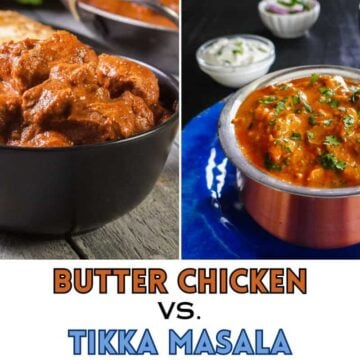


Kelly b. says
I can get tamarind pods easily, if I substitute those for the blocks, how much should I use?
Paint the Kitchen Red says
Kelly, the packet of tamarind I use is about 14 oz. So you’d have to take them out of the pods and get an approximate weight with a kitchen scale, because I’m not sure how many pods you’d need.
Bella says
Hello,
I was really excited to try this at home. When I put the pulp into the mesh strainer, I found it very time consuming and difficult to get it strained. It took so long I finally put the pulp in a blender and then tried straining it again. It would actually take me a fraction of the time to just soak the tamarind in hot water for whatever dish I need it for. Also, I feel like this method wastes a lot of tamarind. When I soak tamarind and extract, I am using the water also in my dish so I waste pretty much nothing and only the solids are thrown.
Did you use a fine mesh strainer to do this? I just don’t see how this can be done in half an hour. It took me more than 1 1/2 hours for the whole process because I tried to get as much tamarind as I could and I had to strain it so many times.
Paint the Kitchen Red says
Hi Bella, I do use a fine mesh strainer and do use my hands to squeeze out the tamarind. One other thing I do is after straining out the tamarind the first round, I add more hot water and do a second round of straining. Did you do that too? I’m sorry to hear you found the process so time consuming. I’m not sure why it doesn’t take my that long to do it – maybe it’s just experience. It’s just so much more convenient for me to just keep it in the fridge and spoon it out!
Laura says
I will be trying this technique for tamarind paste – thanks! Approx how long will the stuff stay good in the fridge?
Paint the Kitchen Red says
Hi Laura, thanks for taking the time to comment! I make sure I use a glass jar, always use a clean dry spoon, and I’ve kept it in the fridge for months with no problem. If you want to be extra careful, bring the paste to a quick boil after straining, to kill any bacteria. I’ve never frozen my paste, but I know people who do, so that’s also an option.
Laura says
Thank you so much for the info! I don’t use a lot at once, so it’s good to know it’ll keep a while. I’ve been using the prepared paste but I miss the blocks – taste is so much better.
Mark Bachrach says
I don’t understand this recipe. If I strain the liquid into a saucepan, won’t I have a liquid and not a paste?
Neena Panicker says
Mark, when you soak the tamarind in water, you don’t really end up with a liquid like water. Instead, it’s the consistency of a thick ketchup. The key is not to add too much water.
Ben says
Tamarind is a must for indian cooking. I didn’t realize you can make in Instant Pot. I will be trying this out soon. Thanks!